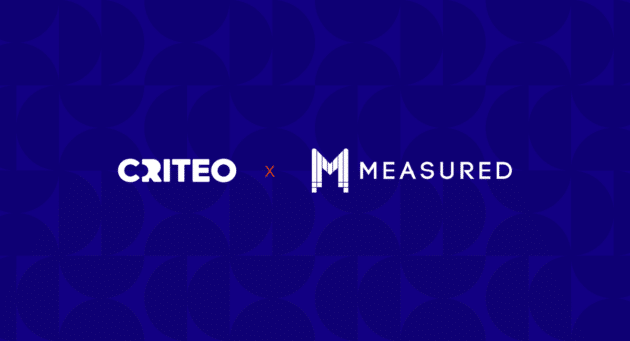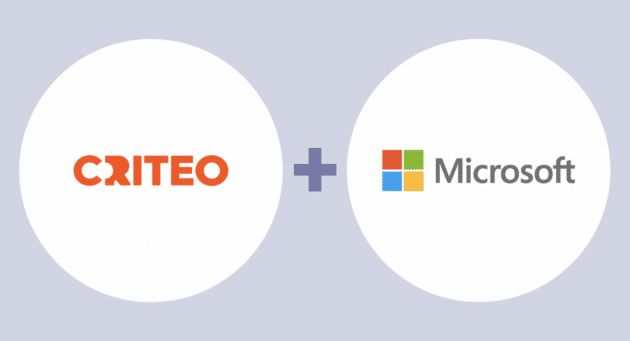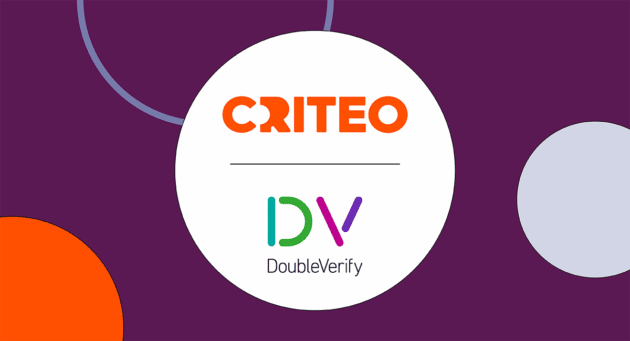The timeframe for third-party cookie deprecation in Chrome is getting closer. The entire commerce media industry—including retailers, brands, agencies, publishers, and their digital advertising partners—is searching for cookie-less solutions that are just as effective as the advertising they do today.
For any approach to work effectively in the future, marketers know they need to grow their first-party databases and find ways to better understand their customers.
On the supply side, publishers have an urgent need to grow and strengthen their first-party data to sustain their revenue. They must ensure that all members of their audience are properly opted-in to receive personalized ads, and that they’re leveraging their ad inventory in a privacy-compliant way.
Meanwhile, contextual advertising is back in the spotlight as advertisers and publishers look for tactics that will drive significant business outcomes without cookies.
Criteo is excited to launch our contextual targeting solution that combines contextual signals with commerce signals from first-party data to increase the effectiveness of your campaigns.
Why Contextual Targeting?
Contextual is trending because it’s an audience targeting method that does not rely on third-party cookies at all. However, its reputation as an outdated, ineffective type of marketing still lingers—perhaps for good reason.
Up until now, contextual targeting has been good at placing messages in contextually relevant environments, but not so good at targeting people that are in a shopping mindset. Just because someone is reading an article about tennis doesn’t mean they are in the mood to buy a pair of tennis shoes.
At Criteo, we wanted to keep the benefits of contextual targeting, but rebuild it as a viable advertising solution in a post-cookie world.
Unlike traditional contextual targeting, our new solution doesn’t just rely on contextual signals, but it also uses commerce signals pulled from first-party data to reach people who are ready to buy. This reduces wasted ad spend and drives better campaign results.
As noted in our latest press release, our Chief Product Officer, Todd Parsons, explains, “Criteo’s contextual solution significantly raises the bar—and allows marketers to combine traditional contextual targeting with commerce data—uncovering the relationship between content and buying behaviors to further drive revenue and accurately measure the impact of their contextual campaigns in cookie-free media. It’s all thanks to the massive amount of first-party commerce data safely housed in Criteo’s Shopper Graph.”
How Criteo Activates Your First-Party Data
First-party data is simply defined as data that a business or marketer owns. This can be data on the advertiser’s or publisher’s website or app, in their customer relationship management (CRM) system, or data they’re collecting through a customer data platform (CDP).
With third-party cookies going away, businesses must get their customers to opt-in to sharing their personal data to continue to deliver personalized ads on a 1:1 basis. In fact, 88% of marketers say collecting and storing more first-party is a high priority in the next 6-12 months, according to Merkle’s 2021 Customer Engagement Report.1
Growing your own first-party database is a necessary step, but it still may not provide the scale needed to launch impactful advertising campaigns. It’s also important to get access to first-party data at scale. One way to do this is by working with a partner—like Criteo—who has a network of privacy-compliant first-party data.
To activate and enhance your first-party data for contextual targeting, we analyze it across our massive First-Party Media Network to understand what consumers are purchasing (commerce signals) and where they spend their time across our publisher network (contextual signals). From there, our AI makes decisions based on these signals to build audiences that are similar to those of your first-party data.
This one-of-a-kind capability enables marketers to continue to find new customers at a global scale without cookies through media lookalikes—the webpages most likely to drive outcomes that impact your business from these customers.
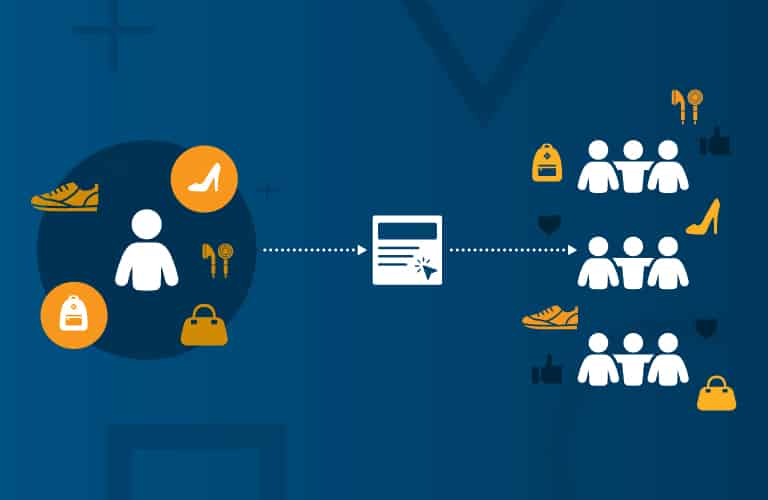
How Criteo Delivers High Campaign Performance
Criteo’s AI technology and the scale of our First-Party Media Network deliver the most relevancy from your contextual ad campaigns. Here’s how it works:
In-Depth Semantic Analysis
Natural language processing scans every single URL across our global media network of 5,000+ premium publishers and the supply-side platforms (SSPs) that we currently work with across 90 regions. This includes examining the URL, site, and category levels, as well as analyzing images, text, and keywords. This rich intel helps us understand the full context of a page.
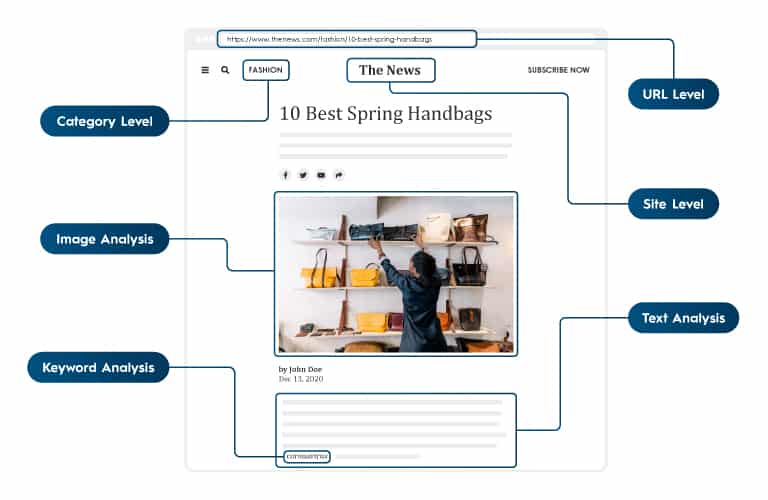
Contextual Category Scoring
Once the URLs are analyzed, Criteo calculates scores for each page to determine the contextual categories it is most aligned with. Today, there are 60+ categories available through the IAB. This will expand to 700 in the future to provide advertisers with even more granularity.
Brand Safety Checks
Criteo works with brand safety partners so that the semantic analysis also flags any hate speech, violence, or other potentially damaging content.
First-Party Commerce Data Analysis
This additional step in the contextual targeting process is made possible by our massive set of transactional data. Because we can access and analyze the first-party data from an advertiser—for example, transactions that are taking place on a website—Criteo can build an affinity score (or product interest signal) between the people who are purchasing on a website and every single URL in our publisher/SSP network.
With this affinity score data, Criteo can display the best product ads for a specific page. These scores are updated weekly to ensure they’re accurate.
For example, the URL below is about handbags. Criteo’s AI shows a high product affinity score for sneakers, which means that people who read this page are also likely to be in-market for sneakers. This triggers our technology to serve an ad for sneakers at this URL.
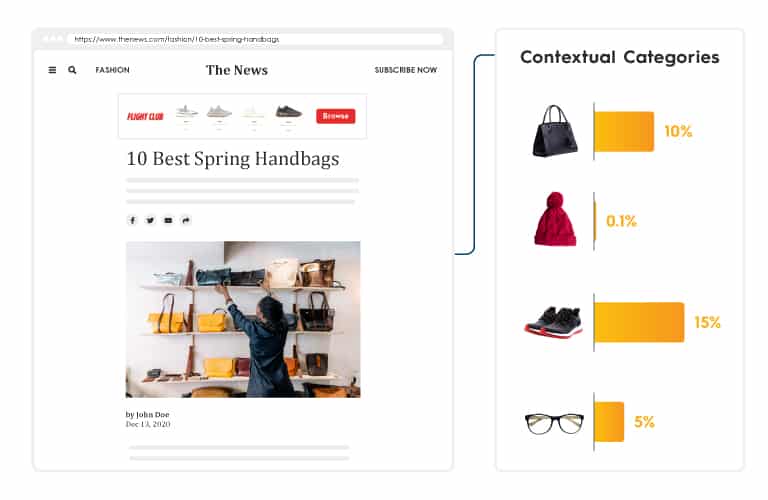
Test Contextual Now & Be Prepared for Cookie-less Advertising
Advertisers who start testing contextual targeting will be better positioned for success when cookies are gone. When you launch contextual campaigns now, you can take advantage of cookies while they’re still here—and the larger pool of first-party data they provide—to help our AI learn and optimize your campaigns.
It’s also an opportunity to get ahead of the competition with an innovative strategy that will help you build up your first-party data pool.
It’s a new world, and the reinvigorated spirit of Criteo in 2021 is all about more transparency, openness, and helping everyone find success amidst major ad industry changes. In many ways, we’re a different company than we were even just one year ago. But don’t take our word for it: Put us to the test.
Learn more about our contextual targeting solution here and contact your account strategist to get started.
1Merkle 2021 Customer Engagement Report, January 2021, US & UK, n=800











